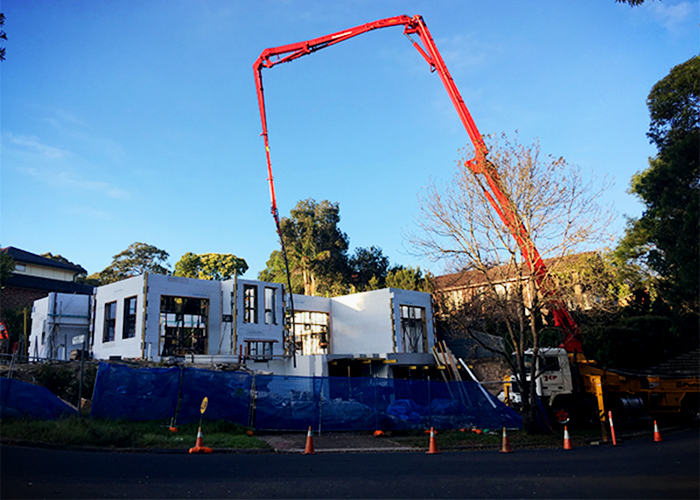Pumping of Insulated Concrete Formwork Guide from ZEGO 5 Step Guide to ZEGO Pump Day! You've built the walls, got everything straight, plumb, and the big day has arrived. Concrete pump day is exciting, however, mistakes on pump day could be costly so we've compiled a 5 Step Guide to ensure that your concrete pump goes smoothly. One: The 5 P's - Prior Planning Prevents Poor Performance!
Two: Check the SLUMP Before You Pump The proper ratios of a concrete mix will determine its strength, pressure, and workability and this is best done with a SLUMP test. The concrete strength will be nominated by your project engineer, however, 32mpa, 180mm slump with a 10mm aggregate using a 50mm block fill hose is recommended to ensure a smooth mix that pours nicely around the reinforcement to prevent voids. Concrete that is wet (high slump) will settle more and have a greater distance between the reo and the concrete. It is recommended to test concrete slump before pouring from each new concrete truck. Three: Stick to the Game Plan
Four: Team Work = Dream Work You've got your pump booked and everything ready to go, however, no matter how organised and well planned you are, you must make sure that the crew all know their jobs on the day and are prepared. Some jobs to designate include;
Five: LAST But Not LEAST Reminders Communication is the paramount on concrete pour day. Set the goal for the day and communicate with the crew regularly especially any challenges or responsibilities they have been designated. Start the pour as early as possible in the day. Do NOT start a concrete pour after 9am on large projects - it is best to always start at 7.00am. This will ensure your crew are fresh, relaxed, and the concrete pump operator does not rush you. If in doubt, there's no doubt. If for some reason, the concrete is not the right slump or is starting to go off in the hopper, please send the truck back and delay your concrete pour until a fresh batch arrives. The concrete must pour freely and easily. For more information regarding pumping of Insulated Concrete Formwork from ZEGO, visit zego.com.au.
|
1300 139 346 GPO Box 4774, Sydney, NSW, 2001
|


 FireFORM Fire Rated Walls by ZEGO
FireFORM Fire Rated Walls by ZEGO Foam Panels for Wall Cladding by ZEGO
Foam Panels for Wall Cladding by ZEGO ReForm Reusable Form for Sustainable
ReForm Reusable Form for Sustainable Insulated Concrete Form Training by ZEGO
Insulated Concrete Form Training by ZEGO How to Build a Swimming Pool with Zego
How to Build a Swimming Pool with Zego Insulated Slab Flooring System by ZEGO
Insulated Slab Flooring System by ZEGO FireFORM for Water Tanks by ZEGO
FireFORM for Water Tanks by ZEGO Reusable Formwork for Construction by
Reusable Formwork for Construction by External Insulating Facade System
External Insulating Facade System ZEGO Insulated Concrete Formwork Project
ZEGO Insulated Concrete Formwork Project Sustainability Net Zero Emissions 2050
Sustainability Net Zero Emissions 2050 Fire Rated Walls for High-Rise Buildings
Fire Rated Walls for High-Rise Buildings Fire Rated Walls for High-Rise Buildings
Fire Rated Walls for High-Rise Buildings Fire-rated Insulated Concrete Formwork
Fire-rated Insulated Concrete Formwork Sustainable Building Construction Using
Sustainable Building Construction Using Thermally Efficient Walls, Floors, and
Thermally Efficient Walls, Floors, and Class 4 Reinforced Concrete Walls and
Class 4 Reinforced Concrete Walls and Rebuilding with ICF's Post Bushfire
Rebuilding with ICF's Post Bushfire Insulated Concrete Formwork Advantages
Insulated Concrete Formwork Advantages Recyclable Formwork for Award Winning
Recyclable Formwork for Award Winning
